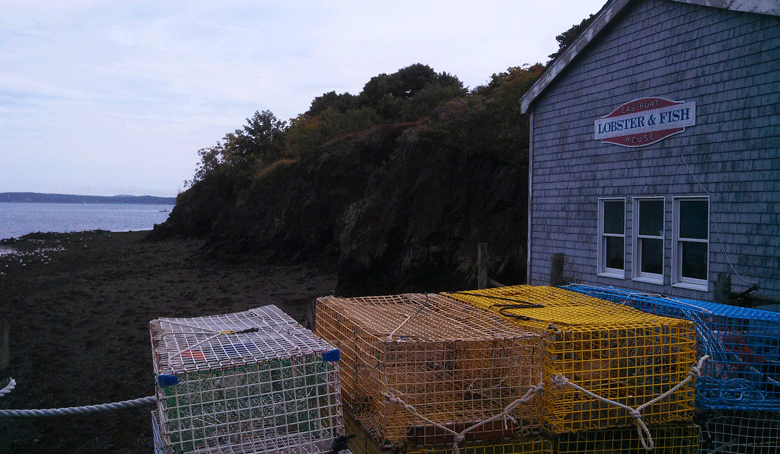In the spring of 2021, the Island Institute undertook a carbon footprint study with Maine-based seafood company and Island Institute partner Luke’s Lobster. It was the first time greenhouse gas emissions were measured along one company’s supply chain of Gulf of Maine lobster.
Both the Institute, publisher of The Working Waterfront, and Luke’s care deeply about the long-term sustainability of Maine’s fisheries and responding to climate change. The consulting firm Council Fire was chosen to do the work.
This inquiry not only helps Luke’s Lobster, a sustainable seafood industry leader, get closer to its net zero carbon goals, but also benefits the working waterfront by pinpointing carbon hotspots and identifying opportunities for sustainable solutions.
This inquiry … benefits the working waterfront by pinpointing carbon hotspots and identifying opportunities for sustainable solutions.
The study showed that lobster has a relatively low carbon footprint compared with other animal proteins—2.89 pounds of greenhouse gas emissions for every pound of lobster sourced by Luke’s Lobster. Its crab products come from Massachusetts, which was also included in the study, and have a slightly lower carbon footprint, at 2.11 pounds of emissions per pound.
These foods compare favorably with other animal proteins, including beef (60 pounds of emissions per pound of protein), lamb (24 pounds), farmed prawns (12 pounds), pork (7 pounds), and chicken (6 pounds).
Specifically, we measured the emissions from harvesting lobster and crab, wharf operations, processing, restaurants, and most of transportation. In this initial study, we did not include emissions related to employee commuting, transportation from grocery distributors to consumer homes, or home preparation or disposal of Luke’s products.
We recognize that this carbon footprint may be lower than other Gulf of Maine lobster purchased from and sold elsewhere, given that Luke’s Lobster has already undertaken many emissions-savings efforts like purchasing renewable energy.
The biggest chunk of emissions for lobster along its supply chain, 75%, comes from fishing, both from the fuel used by boats (62%) and bait used in traps (13%). This aligns with other types of animal-based food—emissions from harvesting or farming typically overshadow other areas like packaging and transportation.
Knowing the scale and source of emissions from lobster will help us understand and prioritize our options for reducing carbon pollution associated with this fishery.
So what does climate action look like for the lobster industry in Maine?
Shifting boats away from fossil fuels must be a big part of our solutions. Electric engines are significantly more efficient options.
Companies like Glas Ocean in Nova Scotia are developing retrofit kits to transition lobster boats to electric hybrid. I was excited to see the first boat it converted when I visited Halifax this past summer. For smaller vessels as a nearer-term starting point, we are working with partners like Flux Marine and Maine Electric Boat Company to get fully electric boats on the water for commercial use, ideally next summer.
There are plenty of other options for near- and medium-term action to move the lobster industry away from volatile and expensive fossil fuels—including solar, switching to bait made from byproducts of other uses, and electric trucks as they become available.
While some of these efforts have high up-front price tags, they stabilize costs and save money in the long run. Funding support is available today for many of these options. We’re here to work alongside folks in the lobster industry and the seafood sector more broadly to navigate these transitions.
Emma Wendt is a community development officer focusing on clean energy and community data for the Island Institute, publisher of The Working Waterfront. She may be reached at ewendt@islandinstitute.org.





